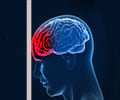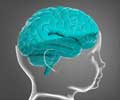Study unveils breakthrough brain activity during early recovery from head injuries, shedding light on brain-wide adaptations in trauma.

Traumatic brain injury disrupts state-dependent functional cortical connectivity in a mouse model
Go to source). This uncovers comprehensive brain-wide adaptations following trauma, including bilateral efforts to establish new neural pathways, detailed in Cerebral Cortex.
‘Using innovative imaging, Tufts University School of Medicine researchers detail brain-wide responses to traumatic injury, highlighting bilateral cooperation in forming new neural pathways, as reported in Cerebral Cortex.
#trauma #imaging #brain
’





“Even areas far away from the injury behaved differently immediately afterward,” says first author Samantha Bottom-Tanzer, an MD/PhD student in neuroscience at the School of Medicine. “Traumatic brain injury research tends to focus on the region of injury, but this study makes a good case that the entire brain can be affected, and imaging in distal regions can provide valuable information.”
Bottom-Tanzer and colleagues are the first to use an imaging technique combining fluorescent sensors of neuronal activity and electrodes to record how many parts of the brain talk to each other after a brain injury.
The team tracked neural activity in mice for up to 3 weeks post-injury during periods of exercise and rest.
While overall neuron-to-neuron connectivity decreased after brain injury, all the mice could use an exercise wheel as normal.
Advertisement
Surprisingly, they did not display distinct brain wave patterns when they were moving versus when they were still, which is what the researchers would have expected.
Advertisement
“After traumatic brain injury, this ability is not as robust, indicating such events are impairing how the brain switches states in a way that we don’t yet understand.”
“What we can see from the data is that the brain has new solutions for how to do all these complex tasks,” he adds.
Tracking Trauma Imaging
This plasticity has clinical implications. Traumatic brain injuries often lead to long-term health problems and kill tens of thousands of Americans each year, reports the Centers for Disease Control and Prevention.The researchers predict that imaging a patient’s brain as they carry out various activities could better pinpoint how somebody might be injured or which functions are impacted, enhancing an individual’s treatment.
“This study underscores the complexity of how injury affects a dynamic and always-changing brain,” says Bottom-Tanzer.
“Most people think of the brain in one state, but our data indicates there are fluctuations, and it might offer opportunities to explore different interventions for physical therapy, speech therapy, and more.”
Going forward, Bottom-Tanzer, Dulla, and colleagues plan to research changes in neural activity following traumatic brain injury for an even longer post-recovery period.
They will also explore how their imaging technology can be used to identify changes in brain activity that may translate to specific types of dysfunction or correlate with long-term outcomes of disease.
A
In an animal model of traumatic brain injury, the researchers found that both hemispheres work together to forge new neural pathways in an attempt to replicate those that were lost.
“Even areas far away from the injury behaved differently immediately afterward,” says first author Samantha Bottom-Tanzer, an MD/PhD student in neuroscience at the School of Medicine.
“Traumatic brain injury research tends to focus on the region of injury, but this study makes a good case that the entire brain can be affected, and imaging in distal regions can provide valuable information.”
Bottom-Tanzer and colleagues are the first to use an imaging technique combining fluorescent sensors of neuronal activity and electrodes to record how many parts of the brain talk to each other after a brain injury.
The team tracked neural activity in mice for up to 3 weeks post-injury during periods of exercise and rest.
While overall neuron-to-neuron connectivity decreased after brain injury, all the mice could use an exercise wheel as normal.
However, the activity of injured brains throughout both periods of running and rest was remarkably different from healthy brains.
Surprisingly, they did not display distinct brain wave patterns when they were moving versus when they were still, which is what the researchers would have expected.
“Whether paying attention or walking, brains switch states depending on the task you’re doing,” says senior author Chris Dulla, professor and interim chair of neuroscience at the School of Medicine.
“After traumatic brain injury, this ability is not as robust, indicating such events are impairing how the brain switches states in a way that we don’t yet understand.”
“What we can see from the data is that the brain has new solutions for how to do all these complex tasks,” he adds.
This plasticity has clinical implications. Traumatic brain injuries often lead to long-term health problems and kill tens of thousands of Americans each year, reports the Centers for Disease Control and Prevention.
The researchers predict that imaging a patient’s brain as they carry out various activities could better pinpoint how somebody might be injured or which functions are impacted, enhancing an individual’s treatment.
“This study underscores the complexity of how injury affects a dynamic and always-changing brain,” says Bottom-Tanzer.
“Most people think of the brain in one state, but our data indicates there are fluctuations, and it might offer opportunities to explore different interventions for physical therapy, speech therapy, and more.”
Going forward, Bottom-Tanzer, Dulla, and colleagues plan to research changes in neural activity following traumatic brain injury for an even longer post-recovery period.
They will also explore how their imaging technology can be used to identify changes in brain activity that may translate to specific types of dysfunction or correlate with long-term outcomes of disease.
Reference:
- Traumatic brain injury disrupts state-dependent functional cortical connectivity in a mouse model - (https://academic.oup.com/cercor/article-abstract/34/2/bhae038/7607167?redirectedFrom=fulltext)
Source-Eurekalert














